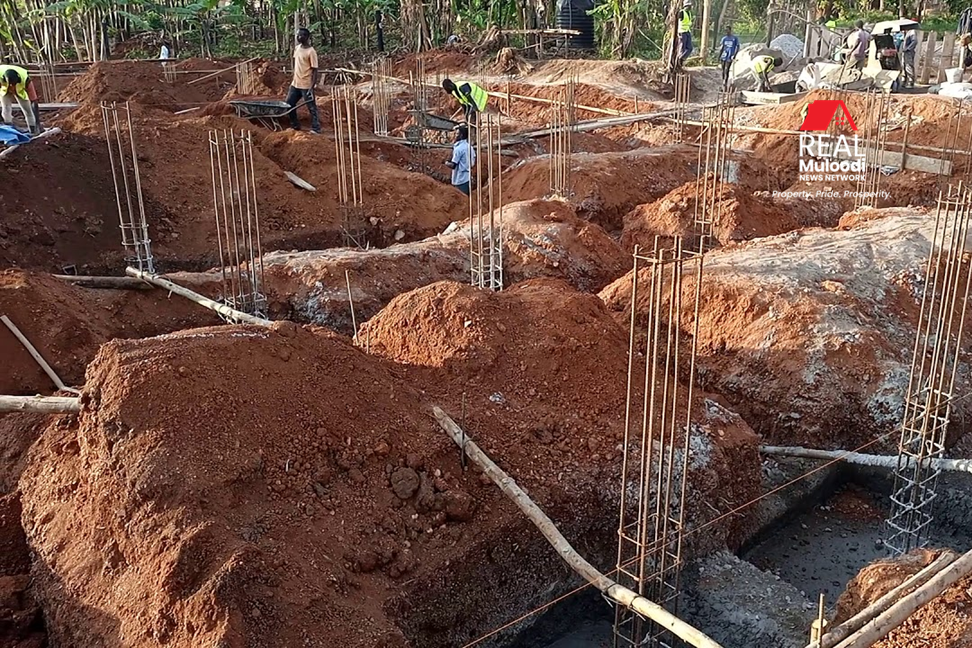UGANDA, Kampala | Real Muloodi News | At the Vision Group’s Homes and Construction Virtual Expo last month, industry experts discussed key points to consider when constructing a storeyed building or bungalow. Under this topic, experts weighed in on the importance of foundations in relation to the type of structures that people choose to build.
The foundation is a major part of a building that supports its weight. Therefore, it should be built with care because it determines how strong and firm your structure will stand. The foundation transforms the load of the structure to the earth to give it a firm and stable hold.
According to the experts, the most common structures being erected in Uganda are storeyed buildings for commercial purposes and bungalows for residential purposes. And there is a significant difference in the foundation and its fortification required for these two types of property, despite the fact that the initial building steps are similar.
Engineer Fred Jjuuko, the executive director of Jjuuko Construction Uganda Limited, says regardless of whether you are putting up a storeyed building or bungalow, you should first test the soil type to ensure it can support the structure you intend to build.
In areas with either clay or sandy soils, you need to use a lot more concrete (cement and aggregate) to create a firm foundation.
Whereas when setting up the foundation of a structure in a swampy area, you need to first install aggregate of 300ml in the foundation because this helps in giving way to the flowing water so that it will not rise up to the level of the floor. You then need to put a damp proof membrane [DPM] on top of the aggregate.
The membrane acts as a barrier between the water and the building structure, thus preventing the passage of water.
“Hire an expert to carry out a soil test to determine its strength and the techniques to be employed before you build. Thereafter, get an architect to draw your plan,” Jjuuko says.
Jjuuko explains that the foundations of storeyed structures differ from those of bungalows since they support different weights.
“The foundation of a storeyed building has deeper columns, and concrete of about one foot deep that is used to strengthen it. Should you want to add a floor to an existing bungalow, you need to break the columns in the foundation, fortify them with concrete and slab that will seal and strengthen it,” Jjuuko says.
Jjuuko adds that you do not necessarily need to vacate the building when adding a second storey. Instead, you can move to one side of the house to allow the engineers to break the columns and ceiling.
Although even a single storeyed house still needs a firm foundation to shoulder its weight, provide a flat and level base for construction and to separate wood-based materials from contact with the ground.
Engineer Osbert Luyinda, an architect at Ostrich Enterprises, encouraged prospective homeowners to consult architects for guidance.
“A genuine architect will visit your site and advise accordingly within the set standards of construction. The client is free to change their plan mid-way through the construction, but must seek the advice of the architect to get the endorsement,” Engineer Luyinda says.
Jjuuko further warns to be careful when contracting workers.
“No one can be the mason, the carpenter, the plumber, the electrician and an all-round builder because these are different fields of expertise. Beware of those who claim to be excellent at all these things and look for authentic professionals for your building,” Jjuko says.
According to Luyinda, the ratios of the materials need to be followed precisely since the structural engineer is the one who recommends, not what the client demands.
“The professional should not let the client dictate because he is the expert, otherwise the building can easily collapse due to lack of proper workmanship,” Luyinda says.
A poor mixture of the building materials can cause shaky foundations. The primary construction materials are cement, sand and aggregate. They have to be mixed consistently to achieve the needed strength of concrete.
According to Engineer Mike Kyambadde, the technical service engineer at Hima Cement, good quality cement for construction should be authentic. Kyambadde says the original Hima Cement has an electronic code that you can scan with your phone to confirm its authenticity.
If you have real estate related news that you would like featured on Real Muloodi News Network, reach out to us via email at support@realmuloodi.co.ug
READ MORE LIKE THIS:



